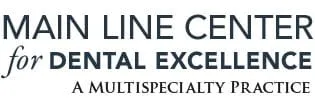Posted on 10/10/2018
Whether you are a teen or adult, chances are you’ve looked in the mirror and wondered if it was possible to find a teeth whitening product that worked. You’re not alone in the desire for a sparkling Hollywood-like smile. Teeth whitening is the Number one requested cosmetic service at dentist’s offices like Main Line Center for Dental Excellence and across the country, and its popularity continues to soar. Outside their Narberth, PA, dentist’s office, it’s every bit as popular. Americans spent more than $1.4 billion on over-the-counter teeth-whitening products last year alone.
WHY DO MY TEETH GET STAINED?
There are multiple factors that cause teeth to become dull and lose their bright, white sparkle. Let’s dig in to what makes up your tooth. The outermost layer of your teeth is called enamel. There are drinks like tea, wine, and coffee that can stain your enamel and cause your teeth to look yellow. If you don’t brush and floss regularly, plaque and tartar can build up on your tooth’s surface and turn it yellow. If you are a smoker or taking certain types of medicine, they could make your teeth yellow. These types of yellow discoloration are often treated with bleaching.
Sometimes, your tooth enamel wears away over the years, revealing the layer underneath, called dentin. Dentin is a naturally yellow, bony tissue that lays underneath the enamel. As people age, their enamel can become thinner, a result of decades of wear and tear. The thinner the enamel, the more likely the yellowish dentin shows through. That’s why older people often have yellowed teeth. Bleaching products won’t help in this situation because they don’t affect the dentin.
WHAT ARE THE WAYS TO WHITEN MY TEETH?
There are a number of teeth whitening products that people use to try to achieve that porcelain-colored smile. They range from dentist office tooth whitening treatments to in-a-box home treatments, to “natural” methods of tooth whitening. But not all of them pass the test of scientific validity.
This is where true tooth whiteners come in. Basically, the whiteners use bleaching chemicals to get down into the tooth enamel and set off a chemical reaction (specifically, an oxidation reaction) that breaks apart the staining compounds.
Most tooth whiteners use one of two chemical agents: carbamide peroxide or hydrogen peroxide (the same stuff that will bleach your hair). When used in the mouth, carbamide peroxide breaks down into hydrogen peroxide and urea, with hydrogen peroxide being the active whitening ingredient.
NATURAL TEETH WHITENING METHODS
About 4,000 years ago the ancient Egyptians saw whiter teeth as a sign of wealth and beauty. They used their chewing sticks to apply a whitening paste that consisted of ground pumice stone in wine vinegar. The Romans actually used a mixture of goat milk and stale urine to try to keep their teeth white. These natural remedy ideas area clearly not what today’s society would tolerate but there are several natural remedies that are very popular for teeth whitening. It’s just that some of them have not been scientifically proven effective.
Using household products like lemon juice or apple cider vinegar as a mouthwash; Or, scrubbing your teeth with an activated charcoal product may seem like a workable theory, but Dr. Dellheim at Main Line says that these types of remedies come with their own risks. While your teeth may look whiter at first, these products can erode your tooth enamel allowing your possibly yellowed dentin to show through. A few natural remedies that do have some scientific merit are baking soda and hydrogen peroxide.
- Baking Soda: While science has not proven that brushing with plain baking soda will whiten your teeth, some studies show that toothpaste with baking soda does have a significant whitening effect. It may not whiten your teeth overnight, but the mild abrasive can help scrub away surface stains on your teeth and create an alkaline environment in your mouth that keeps bacteria from growing.
- Hydrogen Peroxide: This natural bleaching agent has been used for years to disinfect cuts and other open wounds. While there are no scientific studies to prove that rinsing or brushing with just hydrogen peroxide make teeth whiter, there are several studies regarding the teeth whitening effects of toothpaste that includes hydrogen peroxide and baking soda. One study found that brushing with a commercial toothpaste containing baking soda and peroxide twice per day led to 62% whiter teeth in six weeks. However, there have been dangers expressed that overexposure to high concentrations of hydrogen peroxide could cause gum irritation and tooth sensitivity.
STORE-BOUGHT TEETH WHITENING REMEDIES
Store-bought teeth whitening remedies is the largest go-to category for teeth whitening in the United States and it is growing more every day. These products range from whitening toothpastes like Supersmile Professional Whitening Toothpaste or Sensodyne True White to home treatment like Crest 3D White Strips. Following the directions on these treatments, you should experience whiter teeth in a week to 30 days. But be careful not to overuse or your risk damaging your enamel and creating sensitive teeth.
PROFESSIONALLY WHITENED TEETH BY A DENTIST
The products in the gels from the home teeth whitening kits actually contain the same active ingredient that we use in our practice — the bleaching agent peroxide. However, going to the dentist for treatment means you’ll get a more concentrated peroxide product which will whiten your teeth faster and last longer.
LET YOUR NARBERTH DENTIST WHITEN YOUR TEETH
If you already have less than bright teeth, contact the dentists at Main Line Center for Dental Excellence at (610) 664-6061 and find out what they can do to whiten your teeth and bring back your dazzling smile. If your pearly whites are still white, consider implementing some strategies to prevent tooth stains before they happen such as:
- Avoiding staining substances like red wine, coffee, tea, tomato sauce, balsamic vinegar, soda, dark berries, and tobacco residue.
- Rinsing with water after eating. Brushing your teeth is even better.
- Regular brushing, flossing and checkups.
- Drink beverages known to stain teeth out of a straw to prevent direct contact with your teeth.
- Brush your teeth soon after consuming one of these foods or beverages to limit their effects on the color of your teeth.
Make your teeth whitening appointment today with Narberth’s experienced dentists!




